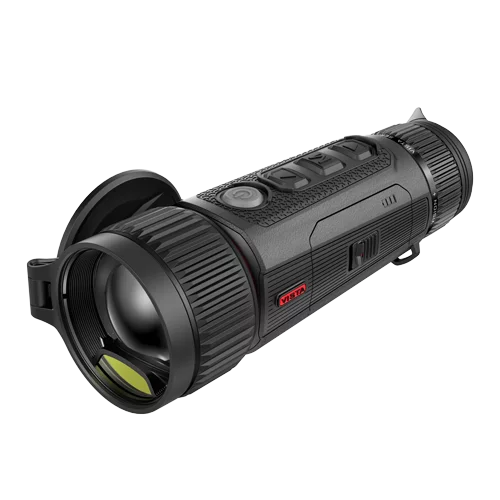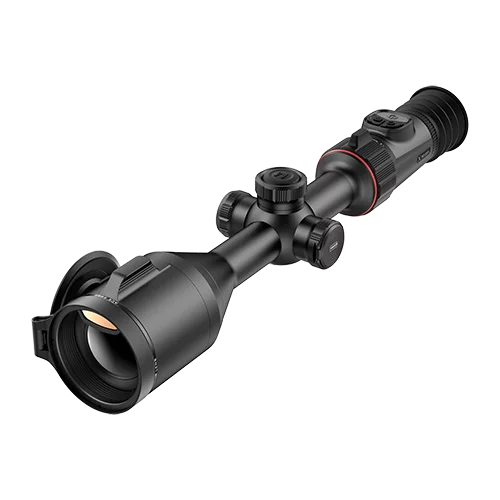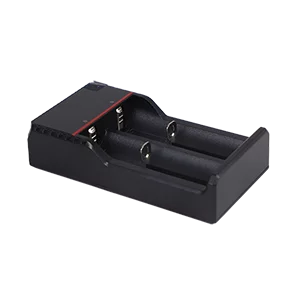センサーは非冷却型赤外線サーマルカメラの心臓部です。センサーは物体から放射される赤外線を吸収し、熱に敏感な材料の抵抗に変化を起こします。特殊な集積回路(ASIC)は、相互接続された電極を通じてこの抵抗変化を増幅し、電気信号に変換します。次に、プロセッサがこの信号をアナログ画像信号に変換し、最終的に画面に表示します。検出器の主な技術パラメーターには、アレイサイズや解像度、ピクセルサイズ、ノイズ等価温度差(NETD)、動作フレームレートなどがあります.
配列サイズは画像解像度を示します。センサーの配列サイズが大きいほど、画像解像度が高くなり、鮮明な画像が得られます。一般的な配列サイズには、256×192、384×288、640×512、1280×1024などがあります.
センサーのピクセルピッチとは、隣接するピクセルの中心間の距離のことで、ピクセルサイズとも呼ばれ、通常はマイクロメートル( μm)単位で測定されます。ピクセルサイズが小さいほど、センサーの空間解像度が高くなり、小さな物体や細部をよりよく識別できるようになります。さらに、ピクセルサイズが小さいほど、各ピクセルが入射する赤外線をより効果的に捕らえることができるため、赤外線に対するセンサーの感度を高めることができます。現在、市場にLongitud de 12 μm.
NETDはセンサー感度とも呼ばれ、センサー設計と薄膜素材に関係します.NETDが小さいほどセンサーの感度が高くなり、より小さな温度差を検出できるようになります.回っているほとんどのセンサーのNETDは20~40ミリケルビン(mK)以下です.
フレームレートとは、センサーが1秒間に撮影・処理できる画像フレームの数を指します.フレームレートが高いほど、表示が滑らかになります。動きの速い被写体やシーンでは、フレームレートが高いほどディテールをとらえやすくなり、ユーザーはより正確な判断ができる50Hz以上です.
Nocpixの研究開発チームは15年にわたり赤外線画像分野に専念してきました。Nocpixが製造したセンTamaño: 256×192, 384×288, 640×512 80×1024の配列サイズも備えています。さらに、8μmのピクセルサイズ、15mk以下のNETD、60Hzのフレームレートなど、主要スペックが他社製品を凌駕するよう、最先端の技術とイノベーションを習得しています.
Nocpixのセンサーは、より高い温度抵抗係数(TRC)を持つVoxフィルムから作られた感熱素材を使用しています。これにより、温度変化に対する感度が高くなり、ノイズ等価温度差(NETD)を15mK未満に下げることができます。この素材は、精密な温度監視と制御を必要とするハイエンド機器に広く使用されています。例えば、航空宇宙分野では、高TRC材料は宇宙船の熱制御システムの主要部品であり、宇宙空間の極端な温度変化の中で宇宙船の温度をリアルタイムで監視・調整し、電子機器Imágenes similares冷却システムの温度監視に使用され、画像品質を高め、機器の寿命を延ばしています.
Nocpixで特別に設計されたMEMSとASICは、業界最先端のイノベーションです。光電信号の干渉を大幅に低減し、信号伝送ロスを最小限に抑えます。これにより、Nocpixのイメージング・システムは高品質の画像を確実に提供します.
MINI小型化され、波長8~14μmの赤外線の受信に優れた性能を発揮します.
強力なセンサーとF1.0より20%光を多く取り込むF0.9のレンズを搭載し、Nocpixの製品はわずかな温度変化もとらえます。リアリティ+ と呼ばれる最先端のアルゴリズムが、画質の上限をもう一段階引き上げ、最も厳しいアウトドア環境においても、ハンターにこれまでに見たことのない鮮明さを提供します.
Nocpixのセンサーは画質に優れているだけでなく、安定性と耐久性でも際立っています。Nocpixの研究開発チームは、設計と素材に大幅なアップグレードを行いました。MINIパッケージは、2列のピン配置による高真空、長寿命設計で、コネクターとハウジングの損傷を防ぎます。さらに、交換が容易なため、ユーザーにとって修理がより効率的で費用対効果に優れています。その上、すべてのセンサーは厳しい品質検査と厳格なテストを受けています。この品質へのこだわりにより、センサーの保証期間を自信を持って10年に延長することができるのです.
これらすべての機能を備えたNocpixの最先端センサーは、夜間、濃霧、大雨など、どんな過酷な状況でも無敵の画像品質を提供します。これにより、ユーザーはより効率的にターゲットを確認し、命中させることができます.





